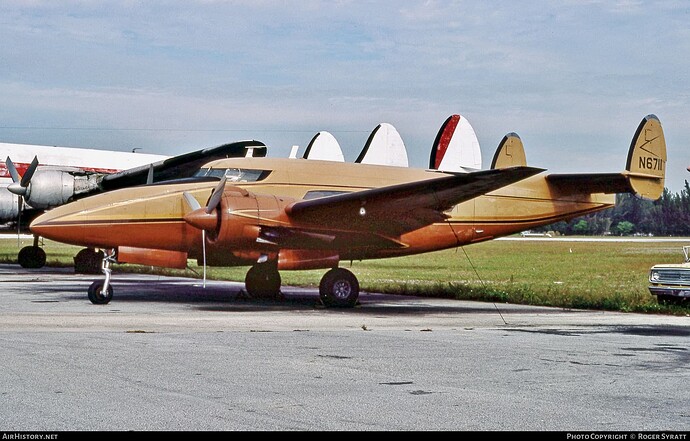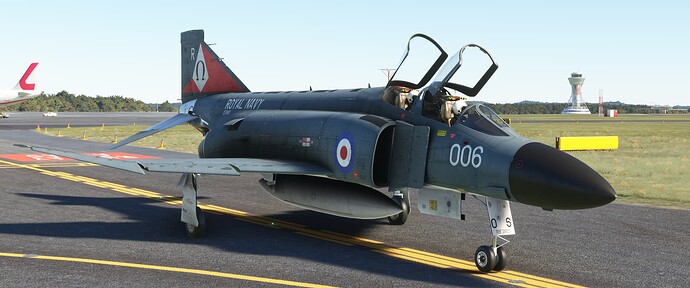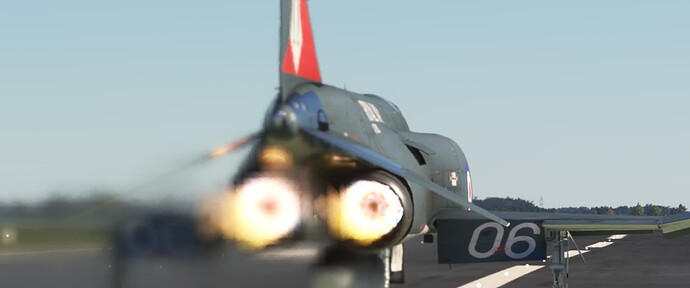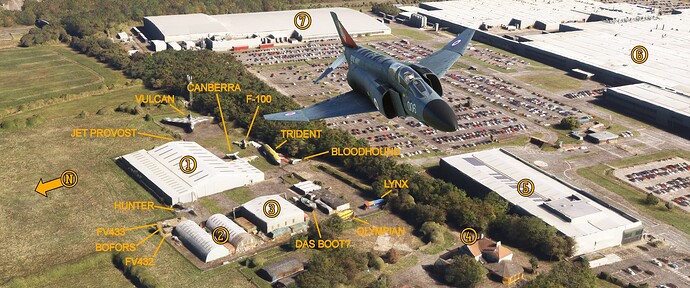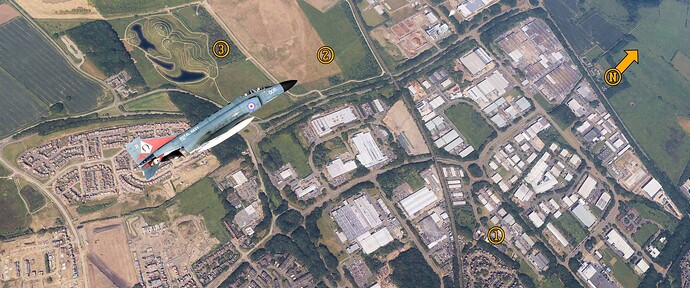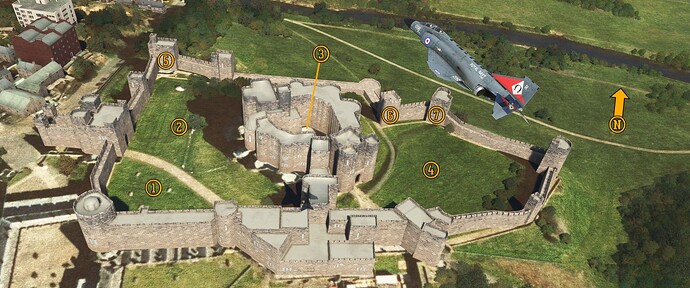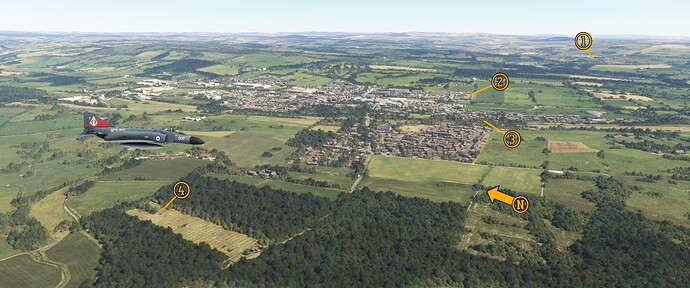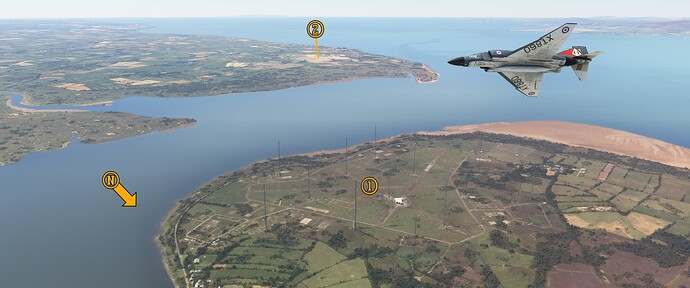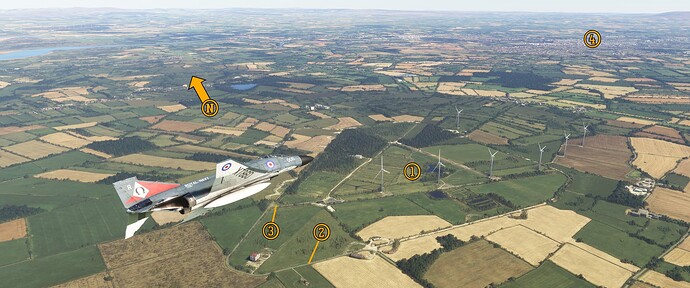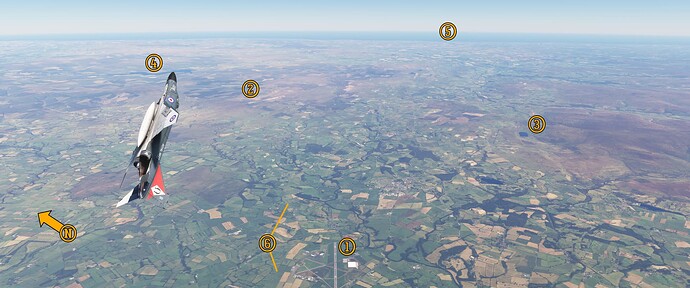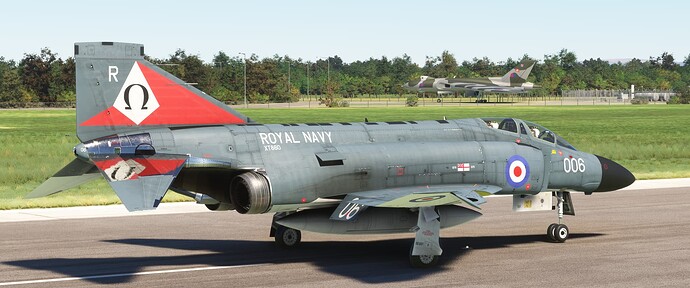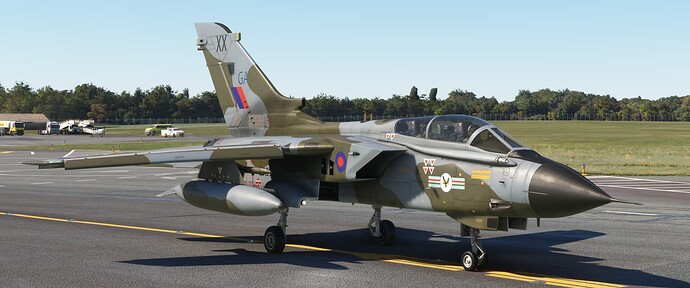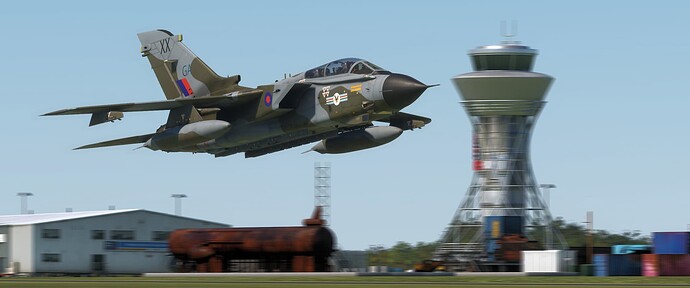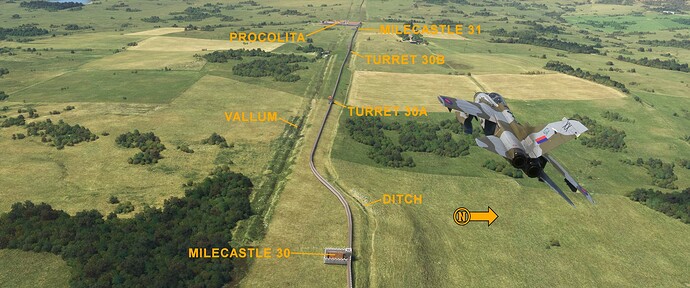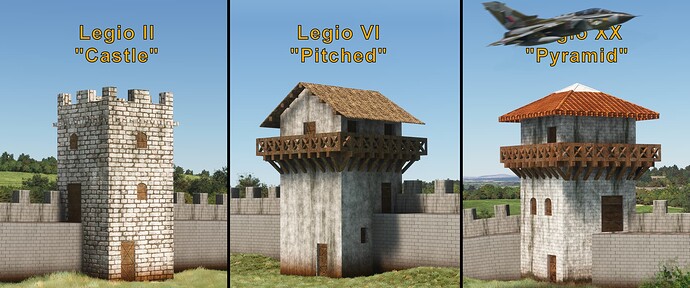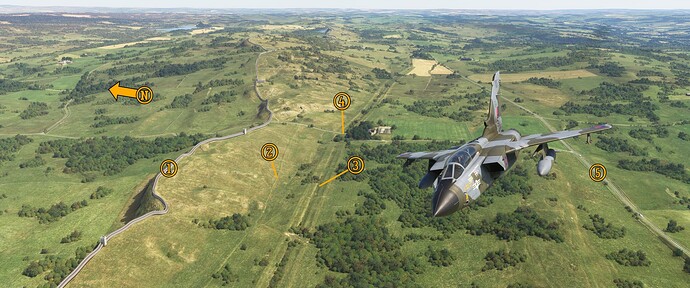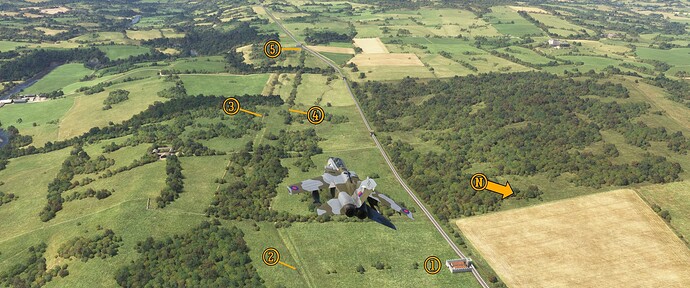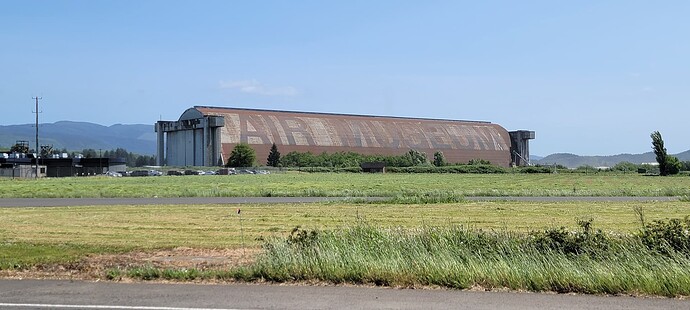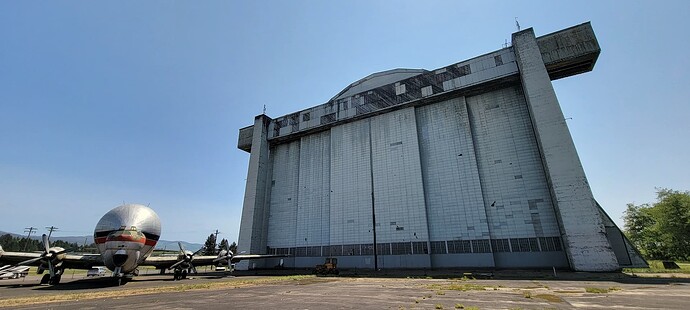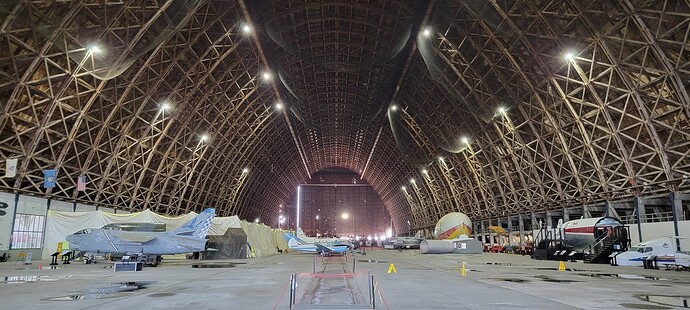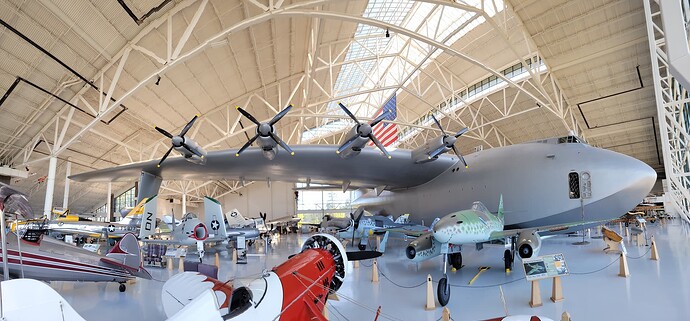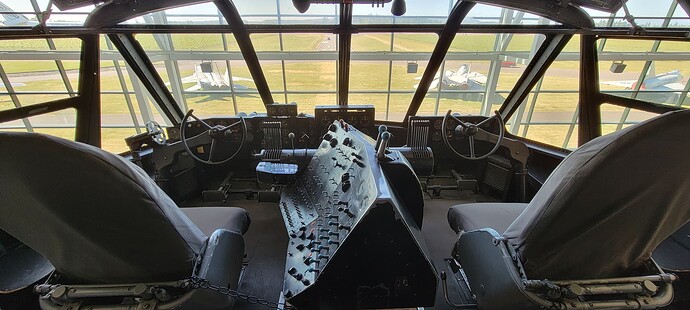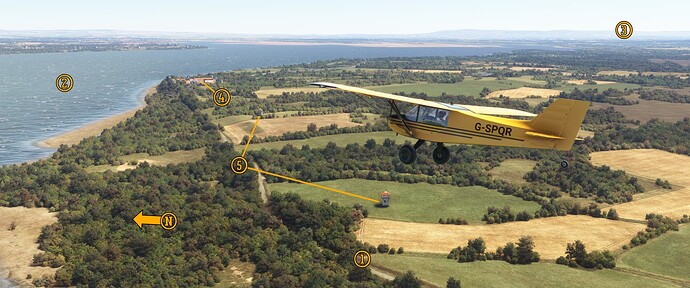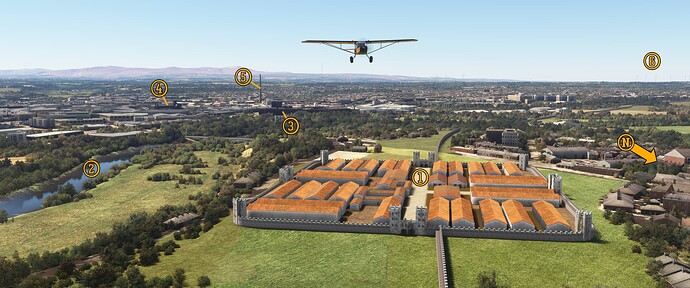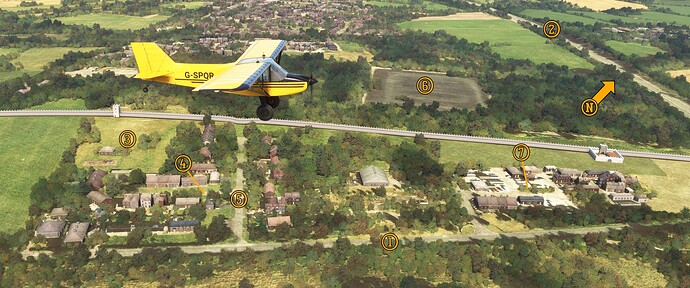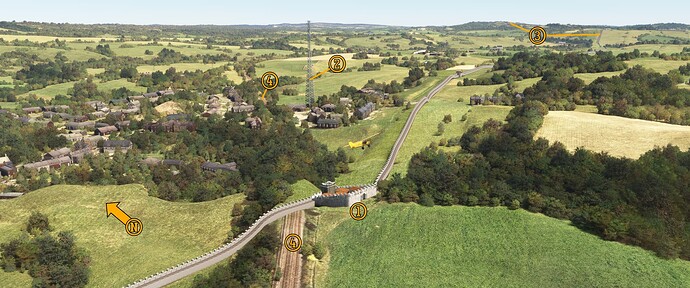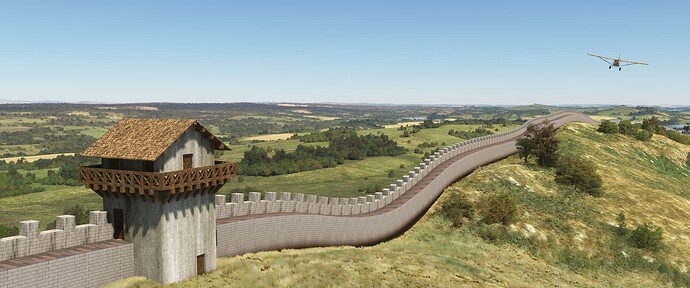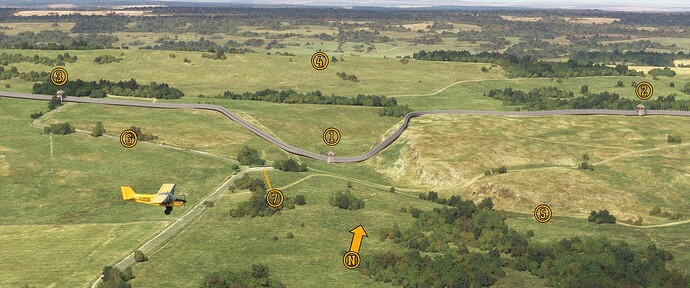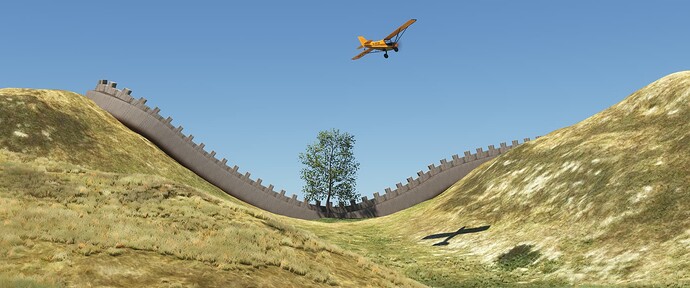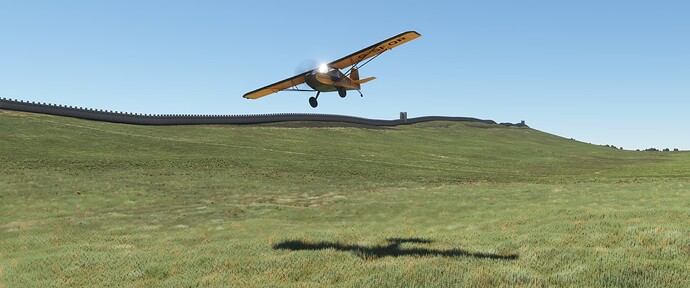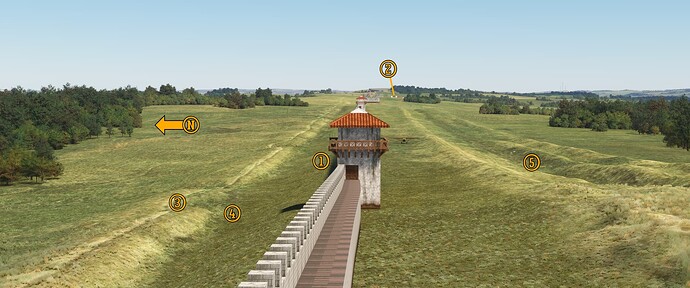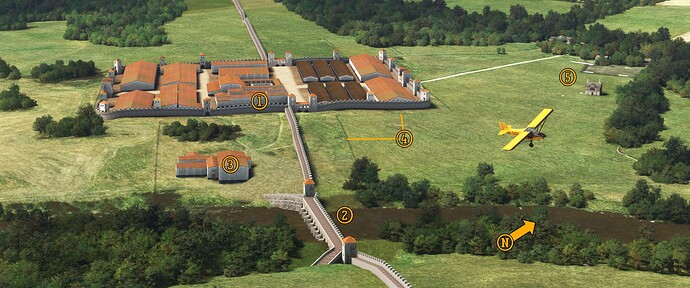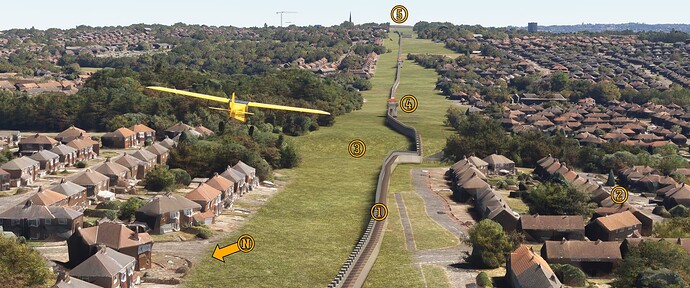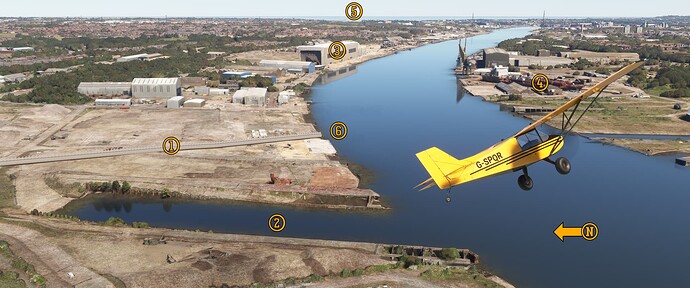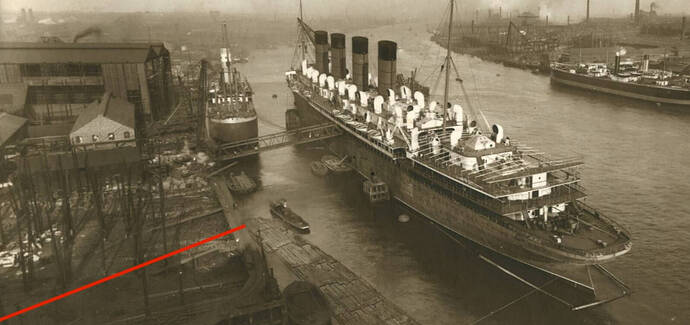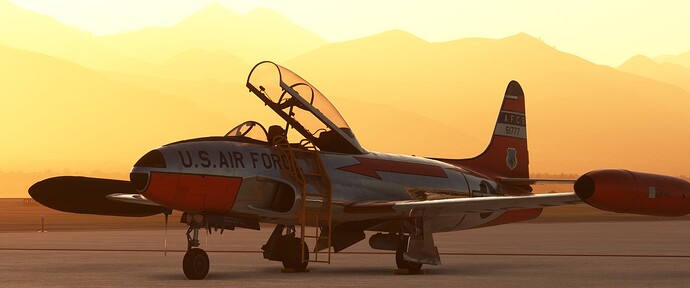Pee-Wee and Nag Over Northumberland and Cumbria
Hadrian’s Wall, Part 1
Pee-Wee says: Welcome back, fellow explorers! Today we’ll travel to one of my favorite places on Earth: Northumberland and Cumbria in the far north of England, two of the largest but least populated counties in all of Britain. Northumberland’s eponymous national park and Cumbria’s Lake District encompass 2,000 square miles (5,180 square kilometers) of the most incredible scenery, and Northumbria alone boasts more than seventy complete castles, including Castle Alnwick, which fans of Harry Potter movies will recognize as the Hogwarts School of Witchcraft and Wizardry! 
Nearly two millennia ago, this area was the northwesternmost frontier of the Roman Empire and was protected by a chain of fortresses, castles, and watchtowers stretching 73 miles (117 kilometers) from Newcastle to the Solway Firth, all connected by an imposing stone wall some 15 feet (4.6 meters) tall. Today this artifact is known by the name of the emperor who masterminded its construction: Hadrian’s Wall.
For this tour, we’re breaking from one tradition: the scenery package you’ll need to see things the way we did isn’t free. Hadrian’s Wall 180 for FS2020 is available from Time Machine Designs (the same guys that brought us the wonderful and free Arrows Across America package). At £12.99, HW180 is well worth the price!
Pee-Wee’s Disclaimer: We are in no way associated with TMD, nor did we receive any compensation for this tour. Nag and I just wanted to try something different! I’m glad we did, because we learned quite a bit, and made some new friends, too! (Thanks again, Mister Pips!  )
)
We’ll fly this tour in three parts:
- Part 1 takes us to some interesting sites around Newcastle and Carlisle and provides an overview of Hadrian’s Wall and the land it traverses. You can follow along in your choice of aircraft for this part.
- Part 2 follows the Wall’s entire length, from Wallsend near Newcastle to Bowness-on-Solway northwest of Carlisle. This part won’t require off-field landings or even closeup viewing, so something fast will work just fine.
- In Part 3, we’ll examine specific locations along the Wall in greater detail. You’ll want to fly something slow that doesn’t mind getting its feet dirty.
Pee-Wee says: One tour, three flights. Now that’s getting your money’s worth!  We (well, I) chose DC Design’s Phantom FG.1 for the first flight.
We (well, I) chose DC Design’s Phantom FG.1 for the first flight.
Pee-Wee says: Here’s my favorite XT860, one of the RN’s first Phantom FG.1s, ready to go at Newcastle. You’ll probably remember this grand old lady from my tour through Rainbow Canyon and Death Valley. She later flew for the RAF’s 43 Squadron but was lost in 1988. Thanks to Merida72 at flightsim.to for the brilliant Royal Navy Phantom Pack.
The Royal Navy originally ordered five squadrons-worth of these custom Spey-powered Phantoms, but the 1960s were tough on the British military and the Royal Navy in particular: only 48 of the original 140 aircraft were delivered, and twenty of those went directly to the RAF. The remainder followed after the Phantom’s final cruise aboard HMS Ark Royal in 1978.
Pee-Wee says: We won’t wade into politics here, but it goes without saying that while the Sea Harrier was a wonderful fleet defender, in April 1982 the British sorely missed their large carriers and air wings. Thankfully, the RAF saved the day by burning hundreds of thousands of gallons of jet fuel to deliver 63 bombs (42 of which missed) and four Shrike missiles (three of which missed) to the Falklands/Malvinas. Yay for the RAF. 
Down, girl.
Pee-Wee says: Sorry.
Need a minute? We have three flights to finish.
Pee-Wee says: No, I’m good. Mind if I fly the Phantom? You can fly the next one.
Deal.
Pee-Wee says: Oh, we almost forgot the waypoints! Here ya’ go.  We recommend starting at Newcastle (EGNT) and landing at Carlisle (EGNC).
We recommend starting at Newcastle (EGNT) and landing at Carlisle (EGNC).
| Waypoint |
Coordinates |
Lat/Long (Skyvector) |
| North East Land, Sea & Air Museum / RAF Usworth |
54.9240 -1.4698 |
545527N0012811W |
| Northumberlandia / Cramlington Aerodrome |
55.0887 -1.6281 |
550519N0013741W |
| Alnwick Castle |
55.4157 -1.7061 |
552457N0014222W |
We’ll Reveal This One Later…  |
55.1155 -3.3585 |
550656N0032131W |
| Anthorn Radio Station |
54.9103 -3.2797 |
545437N0031647W |
| RAF Silloth |
54.8718 -3.3633 |
545218N0032148W |
| Watchtree Nature Reserve / RAF Great Orton |
54.8745 -3.0770 |
545228N0030437W |
 Never say NEVVAA: RAF Usworth and the North East Land, Sea & Air Museums
Never say NEVVAA: RAF Usworth and the North East Land, Sea & Air Museums
Pee-Wee says: Our first stop is the former RAF Usworth in the rolling farmland between the rivers Tyne and Wear south of Newcastle. The Royal Flying Corps’ Cramlington-based No. 36 (Home Defense) Squadron operated a detachment here during World War 1, with another further south at Seaton Carew from where 2nd Lieutenant Ian Pyott downed the German Zeppelin L34 off the coast of Hartlepool on the night of 27 November 1916.
Strange coincidence of the day: L34’s commanding officer, 46-year-old Kapitänleutnant Max Dietrich, was the uncle of famed actress Marlene Dietrich. He and his crew of nineteen perished in the crash.
World War 2 brought another flurry of activity at Usworth, including the construction of two paved runways and additional barracks in the new North Camp across Washington Road. The RAF Auxiliary’s locally raised and battle-hardened No. 607 (County of Durham) Squadron flew Hawker Hurricanes here during the Battle of Britain, adding four kills to the more than 70 the unit scored during the Battle of France.
Pee-Wee says: Did you know a Gestapo spy served in the RAF? Czech pilot Augustin Přeučil was a flight instructor at Usworth, having been recruited by the Nazis before being evacuated to England after the Fall of France in June 1940. The following year he flew a stolen Hurricane to Belgium and made his way back to Czechoslovakia to further assist the Nazis. He was captured after the war, convicted of treason, and hanged. You can read more about him here.
Huh. I’d never heard that story.
Pee-Wee says: There are plenty of words for guys like that, but the forum won’t let me type any of them. Trust me: I tried. I suppose I’ll just stick with “dirtbag.” 
Hey, if he was an instructor, does that mean student pilots went to him for their…Czech rides?
Pee-Wee says: Ooh. Well played! 
Usworth became Sunderland Airport in 1962 serving the general aviation community, although upstart Tyne Tees Airways briefly provided charter services here using Dakotas and an eclectic mix of other types. Nissan Motor Manufacturing UK purchased the Sunderland Airport in 1984 and built a massive car factory on the site. Today several associated companies share the land, and virtually no trace of the airfield remains.
Pee-Wee says: In March 1974 some local aviation and history enthusiasts began meeting regularly at Sunderland, and an official association blossomed: the North East Vintage and Veteran Aircraft Association (NEVVAA). The group began purchasing and displaying historic aircraft from around the United Kingdom, amassing a substantial collection at Sunderland. The group changed its name to the North East Aircraft Museum, and after merging with two other museums in the early 2010s, became the North East Land, Sea & Air Museums (NELSAM). Today, visitors can see everything from double-decker busses to strategic nuclear bombers and armored personnel carriers at this wonderful little museum!
Some of the more interesting aircraft displayed here include:
Dragonfly WG724: The museum’s first aircraft purchased from a scrapyard in March 1975, this naval helicopter was first displayed at Lambton Pleasure Park in nearby Bournmoor near the current intersection of Chester Road and the A183. She’s still here, fully restored and displayed proudly in the Navy hangar.
Vulcan B.2 XL319: The museum’s crowning acquisition arrived on 21 January 1983, having been flown directly from RAF Waddington. She was the first Vulcan released for public display and the largest aircraft to ever land at Sunderland Airport. She’s been cleaned up recently and even ran one of her engines several years ago!
Trident 1C G-ARPO: The only complete Trident 1 remaining in England, ARPO was undergoing restoration by the Save the Trident team but was officially taken up by the NELSAM in 2023. She’s painted in not-quite-accurate Northeast Airlines colors (Northeast operated Trident 1Es, not 1Cs). Look carefully and you’ll see her vertical and horizontal stabilizers on blocks east of the museum’s main building, and her wings directly behind her fuselage. Here’s hoping she’s fixed up right soon!
Pee-Wee says: Here we are flying west over the (1) NELSAM. There’s quite a few powerlines and other obstructions here, so be careful! The land vehicles and naval artifacts are displayed in these two (2) Romney Huts. This (3) larger hangar is used for restoration and maintenance work and isn’t open to the public. The museum sits on what was Usworth’s North Camp, but none of the original structures remain, and the only military presence is the 2214 Air Cadets Squadron, which occupies the two buildings west of the Romney Huts. Over here is the (4) Rustica Trattorica Italian restaurant, formerly the Three Horse Shoes public house and RAF Usworth Officer’s Mess.
Across the street on the former airfield proper is the (5) Driving the Electric Revolution Industrialization Centre North East where Newcastle University and the University of Sheffield work to develop new electric production technologies. The former airfield itself is completely covered by (6) Nissan’s car factory where gas or hybrid Juke and Qashqai crossovers are produced. Behind our Phantom is (7) AESC’s new car battery gigafactory, a joint venture between Nissan and the Tokin Corporation.
Wait a second. “Das Boot?” What’s that all about?
Pee-Wee says: Well, that thing sure looks like the hull of a boat, but I can’t figure out which one, and in real life it’s not there anymore. If anyone knows its identity—or what the heck it really is—please respond here. Thanks! 
 Zounds! What Mounds!: Northumberlandia
Zounds! What Mounds!: Northumberlandia
Our next stop is the abandoned Cramlington Aerodrome, the first Royal Flying Corps airfield in northeast England. Number 36 (Home Defense) Squadron was formed here during the Great War to defend the industrial northeast from German Zeppelin raiders. Aviation enthusiasts established the Newcastle upon Tyne Light Aeroplane Club here in 1925 and a commercial enterprise soon followed. Cramlington remained active until 1935 when all its operators moved to the new Woolsington Aerodrome (now Newcastle International Airport). Nothing remains of this pioneering airport today except an open field, the western portion of which is encroached upon by the Shotton Surface Mine.
Pee-Wee says: The Royal Navy built the Cramlington airship station to the east, and four SS Class patrol blimps operated there during the Great War. The 300-foot (91-meter) shed wasn’t completed until after the war and the Airship Development Company’s advertising blimp G-FAXX was the only airship to shelter there. The shed was razed in 1967, and nothing remains of RNAS Cramlington today.
I’d love to chat more about the airship station, but we’re here for another less modest reason! In 2004 the Banks Group (owners of the Shotton Surface Mine), the neighboring Blagdon Estate, and American landscape artist Charles Jencks schemed to build a massive land sculpture and public park from the mine’s overburden. Construction began in 2010 and Northumberlandia—“The Lady of the North”—opened six years later. One hundred feet (33 meters) tall and one quarter mile (402 meters) long, she is reportedly the largest female sculpture in the world.
Pee-Wee says: Here we are turning to the north over Northumberlandia and the former Cramlington airfield and airship station. The airship hangar was located on the southern edge of the landing field right about (1) here, oriented northeast to southwest. Cramlington Aerodrome was located in (2) this field, with the hangars at the point of our Phantom’s nose.
And (3) here’s the Lady of the North. Her head is near the top of the photo.  She’s wheelchair accessible and open daily, but if you want a bite from the café, you’ll need to be here between 10 a.m. and 4 p.m. in Summer. There’s no entrance fee, and well-behaved dogs are welcome.
She’s wheelchair accessible and open daily, but if you want a bite from the café, you’ll need to be here between 10 a.m. and 4 p.m. in Summer. There’s no entrance fee, and well-behaved dogs are welcome.
For those of you in helicopters or STOL airplanes, there’s plenty of interesting screenshot opportunities down there. Have fun and remember this is a family friendly forum! 
 Exitus Per Tabernam Donorum!: Alnwick Castle
Exitus Per Tabernam Donorum!: Alnwick Castle
Exitus Per Tabernam Donorum? What’s that?
Pee-Wee says: It’s the magic spell that turns a place into a tourist trap. It’s Latin.
What’s it mean?
Pee-Wee says: “Exit Through the Gift Shop.”
Ah. Very fitting.
Pee-Wee says: Yes, Harry Potter fans, next up is Alnwick Castle, current seat of the 12th Earl of Northumberland and filming location of Harry Potter and the Philosopher’s Stone and Harry Potter and the Chamber of Secrets.
I’ve never seen the movies.
Pee-Wee says: Really?
I read the books.
Pee-Wee says: Well, I’ve only seen the first two, and I can confirm that the books were better. Maybe we should binge watch the others on your next days off?
It’s a date. 
Alnwick Castle dates back to the very beginning of the 12th Century when English nobleman Ivo de Vesci built the first fortifications here overlooking the River Aln. Sir Henry Percy, the 1st Earl of Northumberland, purchased the greatly expanded Alnwick in 1309, and his descendants live here today.
Like many English castles and manor homes, Alnwick Castle flirted with financial ruin during the early 20th Century, and the Percy family looked for ways to keep their home afloat. In 1954 they turned to the motion picture industry with the filming of Prince Valiant, in which Alnwick stands in for King Arthur’s Camelot. Other films and television productions followed, including Ivanhoe (1982), Robin Hood: Prince of Thieves (1991), Transformers: The Last Knight (2017), and Downton Abbey (2015-16).
Here’s Alnwick Castle overlooking the market town Alnwick and the River Aln. Unfortunately, Alnwick is represented by a questionable assemblage of autogen buildings in MSFS. This detailed representation is included in Orbx’s Great Britain Central package.
Harry’s first broom flying lesson was filmed here on (1) the outer bailey’s south lawn. He learns the ins-and-outs of Quidditch on the (2) north lawn. Various scenes of Hogwarts students walking between classes were filmed here in (3) the central courtyard. The Whomping Willow lives over here in the (4) inner bailey, which is also where the Weasley’s enchanted Ford Anglia rudely deposits Harry and Ron in The Chamber of Secrets.
There’s more to Alnwick Castle than filming locations. The Fusiliers Museum of Northumberland is located in the (5) Abbot’s Tower and the (6) Postern Tower contains the Percy family’s art and artifact collection. In the (7) Constable’s Tower you’ll find military displays related to the Percy family and its contributions during the Napoleonic Wars.
Alnwick is open daily from 10 a.m. to 5 p.m. Tickets cost £23.95 (about $32) at the gate but are 10% less online.
(By the way, we actually did watch all the movies last weekend, and she was right: the books were better.  )
)
Next we flew approximately 90 miles (145 kilometers) northwest into Scotland to our next site, but we’ll delay talking about it until Part 2. It’ll make more sense then! 
For now, let’s skip to our next location in Dumfries and Galloway south of Glasgow. It’s a potentially upsetting place, so jump ahead to  if you want, or click on the blurred text to read on.
if you want, or click on the blurred text to read on.
 Lockerbie
Lockerbie
There really isn’t much to say about this town in the Scottish Uplands that hasn’t already been said. If you don’t know the story, read this.
Here we are passing west of Lockerbie, flying south toward Carlisle.
Clipper Maid of the Seas’ forward fuselage and flightdeck landed in a (1)
field opposite the Tundergarth Church, where today you’ll find the Lockerbie Air Disaster Remembrance Room, a public memorial to the victims, three of whom are interred in the church’s cemetery.
Maid of the Seas’ wings, engines, and center fuselage landed on (2) Rosebank and (3) Sherwood Crescents in the south of Lockerbie, destroying fifteen homes and gouging a massive crater.
The winds aloft carried debris more than 20 miles (32 kilometers) to the east, beyond Langholm (not visible behind the hills in the distant center of our photo). Much of Maid of the Seas remains interred with the Air Investigations Branch (AIB) at Farnborough, but a large portion rests in a scrapyard near RAF Coningsby in Lincolnshire.
The Lockerbie Memorial Garden is located off Sherwood Crescent, and a (4) Garden of Remembrance is located in the Lockerbie (Dryfesdale) Cemetery west of town. Both are open to the public.
One man—a Libyan—was convicted of bringing down Maid of the Seas but served only ten years of his life sentence before being released on “compassionate grounds” due to his advanced cancer. He maintained his innocence until his passing in 2012. A second Libyan man is currently on trial in the United States.
The bombing claimed the lives of 270 passengers, crew, and townspeople and remains the deadliest terror attack in the UK’s history.
Anything to add?
Pee-Wee says: No. 
Okay.
 All Your Base Are Belong To Us: RAF Silloth and Great Orton, and RNAS Anthorn
All Your Base Are Belong To Us: RAF Silloth and Great Orton, and RNAS Anthorn
Pee-Wee says: We’ll leave Scotland now and head across the Solway Firth into Cumbria. (For our fellow Americans, “firth” is the Scottish word for “river estuary.”) On the coastal plain west of Carlisle are four World War 2–era airfields: three RAF and one Royal Navy. Let’s take a look at three of them.
In this southwest facing screenshot, we’re flying over (1) Anthorn Radio Station, formerly RAF/RNAS Anthorn, aka HMS
Nuthatch. Built for the Royal Flying Corps during the First World War and reactivated for the Royal Navy during the Second, Anthorn was a depot where newly delivered Corsairs, Seafires, Barracudas, and Fireflies were modified to service standard. It reopened in 1964 as a NATO very low frequency (VLF) transmitter station for communicating with submerged submarines. LORAN and other transmitters were added later, and today, thirteen guyed masts ring the former airfield. Most of Anthorn’s runways and perimeter track remain intact, but watch out: some of those masts have cables running between them!
Pee-Wee says: Yes, the Royal Navy’s shore stations are traditionally named like commissioned ships (i.e. HMS Nuthatch for RNAS Anthorn). I’ve read various explanations online, but it seems the real reason may be lost to history. The tradition continues today with HMS Heron, Seahawk, Nelson, Dartmouth (Yeovilton, Culdrose, Portsmouth, and Brittania Royal Navy College), and others.
In the distance is (2) former RAF Silloth, once home to several RAF Coastal Command and training units. Apparently, much of the in-flight footage of RAF Lockheed Hudsons in the 1941 Tyrone Power and Betty Grable film A Yank in the RAF was filmed here.
Pee-Wee says: Back in World War 2, MacDill Airfield in Florida earned the slogan “one a day in Tampa Bay” thanks to the regularity with which its B-26 bombers ended up in the water during training flights. Similarly, the Solway Firth earned the nickname “Hudson Bay!”
Silloth was where the world’s first “crew procedures trainer” entered service. The “Silloth Trainer” used the forward fuselage of a Halifax bomber outfitted with pneumatics, hydraulics, accurate instrumentation, and aircrew equipment. For the first time, aircrewmen could practice emergency drills as a crew. The device was apparently successful, as at least fourteen others were built for other training stations around the United Kingdom. Unfortunately, none remain today.
Pee-Wee says: Here’s (1) former RAF Great Orton, once the home of Wellington and Hurricane operational conversion units. Used for storing munitions until 1952, Great Orton was declared surplus and returned to farmland. Ten wind turbines were built here in 1992, but four were removed seven years later. (Oddly, there are seven turbines here altogether. We have no idea who the seventh belongs to!) Much of the airfield’s (2) perimeter track remains intact, and you can still see the original aircraft dispersal diamonds.
Back in 2001 Great Orton became the epicenter of the catastrophic Foot and Mouth Disease outbreak that ravaged Britain’s livestock population. More than 500,000 sheep, cattle, pigs, and other animals were culled and either buried in mass graves or burned at Great Orton. Today the former airfield is the public Watchtree Nature Reserve, and a small memorial to the animals killed here is located at (3) the park entrance. That’s (4) Carlisle in the distance. We’ll land there in a few minutes, but first…
Pee-Wee says: Our Phantom’s Speys produce a combined 41,000 pounds of thrust in full burner at sea level, and by this point in our flight, XT860 weighed about 41,000 pounds, so…sea level to 20,000 feet in about thirty seconds. Boo. Yah. 
 Beyond Here Be Dragons…and Barbarians: Hadrian’s Wall
Beyond Here Be Dragons…and Barbarians: Hadrian’s Wall
Now for the main event. What is Hadrian’s Wall? Was it really just a wall?
Pee-Wee says: It was a wall, but not “just a wall.” Imagine a stone wall the height of a semi-truck trailer stretching from Manhattan to Philadelphia, or London to Southampton, or Berlin to Leipzig. It was a really big wall.
Why was it built here?
Pee-Wee says: Late in the 1st Century AD, the Romans conquered Caledonia—the land we know today as Scotland—but were forced to abandon the territory when the occupying legions were needed elsewhere. The Romans “strategically redeployed” to the land between the Solway Firth and River Tyne, the narrowest point on the island they called Britannia. When you’re building a wall from stone and earth, every mile matters!
Huh. So, why did they build the wall?
Pee-Wee says: That’s a tough question, because there’s no consensus among historians. Some say that Emperor Hadrian chose to consolidate his empire rather than further expand its borders and “sealed” its edges accordingly, while others believe the wall was designed to protect the empire from “barbarians” to the north. A wall with forts and gates also allowed control, taxation, and observation of people and goods crossing the border in both directions.
But the most likely reason is far simpler: compared to the costs of manning, training, and supplying a large army to occupy lands with such a small tax base and virtually no natural resources, the wall is like a water-cooled, graphite-moderated reactor with a positive void coefficient:
Nice.
Pee-Wee says: Thanks! I worked hard for, like, two minutes on that.
Construction of Hadrian’s Wall took approximately six years beginning in 122 AD. Its garrison of 9,000 auxiliary infantrymen and cavalry occupied forts, milecastles, and watchtowers spaced so that anyone attempting to breach the wall was never more than 900 feet (275 meters) from Roman sentries, and the roadway connecting the fortifications meant that reinforcements were only a few minutes away. A trench with obstacles arranged like vegan barbed wire ran along the northern face to ensnare any would-be invaders, and the wall’s tightly packed, lime washed stones made climbing its face nearly impossible.
Shimmering white in the sunlight, the imposing edifice slicing through the countryside was the ultimate expression of Roman authority.
Pee-Wee says: Here we are sailing over the top, looking down onto Cumbria and Northumberland, the Roman frontier. Below is the (1) Carlisle Lake District Airport, formerly RAF Crosby-on-Eden, and to the northeast is the RAF’s electronic warfare training range at (2) Spadeadam where the Blue Streak intermediate range ballistic missile was first tested. (You can see the test stands here, and one of five remaining missiles here. Unfortunately, there’s nothing there in MSFS.)
This valley is formed by the (3) North Pennines to the south and the (4) Cheviot Hills to the north. At our Phantom’s nose is Kielder Water, the highest capacity man-made lake in the United Kingdom, and in the far distance is (5) Newcastle, only 46 nautical miles (85 kilometers) away as the crow flies.
Pee-Wee says: Look carefully and you’ll see (6) Hadrian’s Wall winding its way across hill and dale toward Wallsend. We’ll get a much closer look in Parts 2 and 3.
Pee-Wee says: Well, that was a fun flight, and…whoa! Is that a Vulcan?
It sure is! Skell300’s excellent freeware Carlisle Airport scenery (seen in this screenshot) and UK2000’s payware package include Vulcan XJ823 at the Solway Aviation Museum. She was flown here in January 1983 and is the only surviving MRR variant. The museum’s collection also includes a Vampire, Meteor, Canberra, Lightning, Phantom, and others.
Pee-Wee says: Two Vulcans in one flight? Man, I thought they were rare. Turns out they’re everywhere!
There are currently nineteen Vulcans on display, three of which are here in the United States at Offutt, Castle, and Barksdale.
Pee-Wee says: I’ll be in the car.
Hold on! We’re not done yet. Last year, the Solway Aviation Museum purchased XB259, the first production and sole surviving Blackburn Beverly, and transported her overland from Fort Paull to Carlisle. I can’t wait to see “Big Bev” back in one piece! Those wishing to donate should head over to the museum’s main webpage.
Pee-Wee says: So…we’re going to Carlisle?
I’ll be in the car. 
Pee-Wee says: Okay, now we’re done.
Yes, we are…sort of. Ready to fly Part 2?
Pee-Wee says: I sure am! You can choose our ride this time. We’ll need something fast that’s also maneuverable and efficient down low, and that looks awesome.
Is that last part really a requirement?
Pee-Wee says: My man doesn’t fly ugly airplanes.
I flew Jetstreams.
Pee-Wee says: My man doesn’t fly ugly airplanes anymore. 
Thanks for tuning in, everyone! Hopefully you learned something interesting today. Look for Parts 2 and 3 soon, and remember to keep the blue side up, have plenty of fuel in the tanks, and avoid the red guarded switches.
Pee-Wee says: Bye for now! 
![]() )
)![]()
